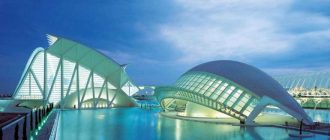Want to learn more about Tarragona, Spain? Read on for facts and info on this ancient Mediterranean city of Spain…
Situated in the south of Catalonia, Tarragona is a Mediterranean city of Spain. It is located in the province that goes by the same name and has been established as the capital of the region. According to the latest updated statistics the region has a population of 155,563.
This ancient city went by the name of Tarraco in Roman times. The Romans established Tarragona as the capital of Hispania. There is a certain group of historians that consider this region to be the ancient Iberic town of Kosse. However there are others who are of the opinion that the city was actually founded by the Phoenicians and was known as ‘Tarchon. This name is reflective of its elevated position as it is located on a high rock that has been measured to be more than 800 feet above sea level.
The strategic location of the Spanish city places it on the River Sulcis which is located at a bay on the Mediterranean Sea. It has the River Iberus and the Pyrenees on its either side. The main road that runs along the southeastern coast of the Iberian Peninsula is where the city is located. The two brothers Publius and Gnaeus Scipio were the ones responsible for fortifying the region and enlarging its borders.
The city has been accorded much importance by rulers of the region throughout the course of history of the country. Tarragona also had its own coin mintage facility and was regarded as being the richest town of its like all along the coast. Along with this the city has extremely fertile plains that gave rise to a flourishing agricultural industry. It is also blessed with plenty of sunshine along its shores which further produces environment a conducive to agriculture. The locality is also known for its production of flax.
Ancient Remains in Tarragona
The city of Tarragona has many ancient remains that have been left over from centuries. Among the must-see sites of the region are the bases of large Cyclopean walls situated close to Cuartel de Pilatos. It is believed that these ancient remains predate the Roman era. The building served as a prison during the 19th century and it is also considered as being the birthplace of Augustus. Over the course of history the ancient remains have not been maintained as they should have been because of the continuous presence of citizens in the region. The town also features an amphitheatre close to the shore which has served the purpose of a quarry. Also part of the ancient remains is a 1500 feet long circus that was constructed in the Placa de la Font area.
Visitors to the region will also be able to find inscriptions on stones in Latin and Phoenician. The city also houses two ancient monuments that are among the better preserved relics in the territory. One of these ancient structures is an aqueduct and the other is known as the Tower of the Scipios.





